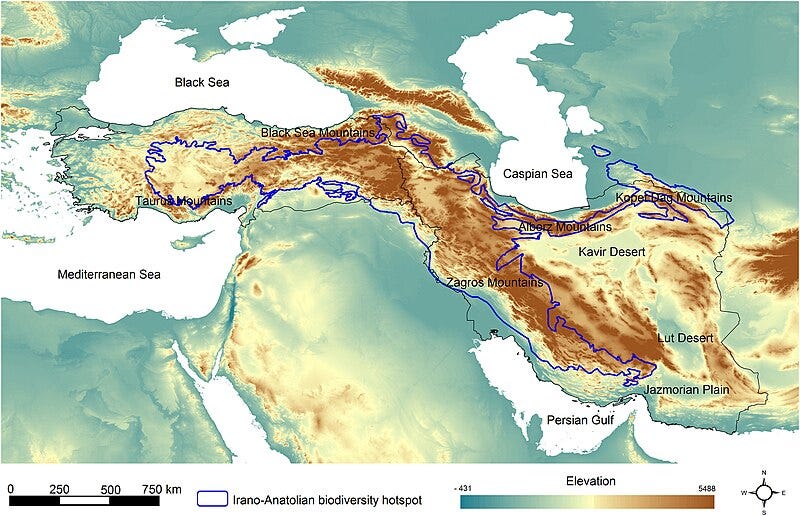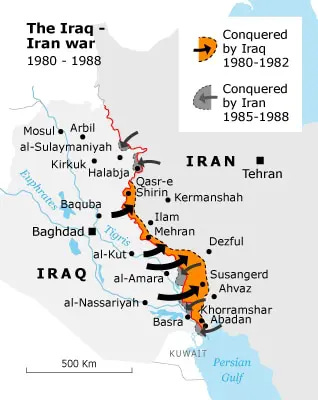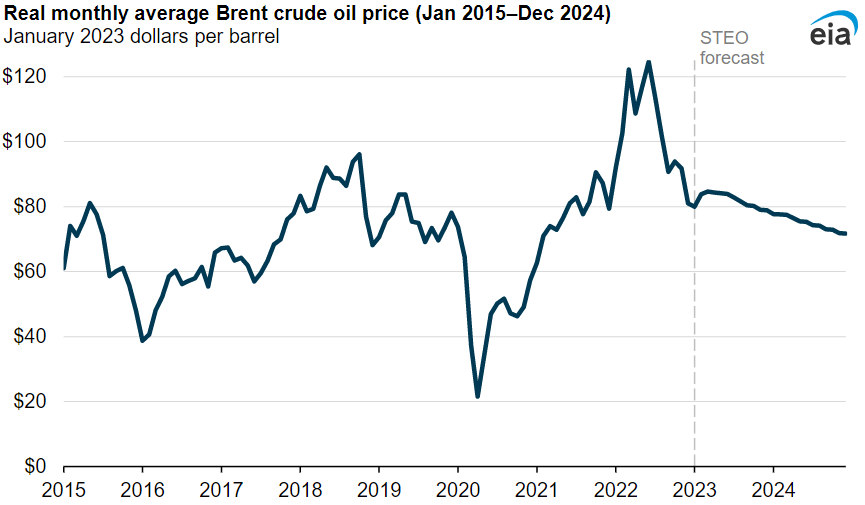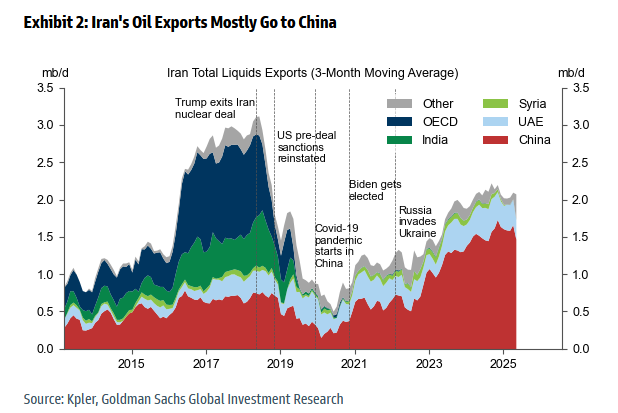I have been surprised in the last two years by the incompetence of the Iranians. Their Hezbollah proxies were blown up by pagers. Their ally, Assad, fled to Moscow.1
Russia was supposed to take Kiev in three weeks, and Iran was supposed to hold Damascus. Instead, it conducted a retreat from Syria, abandoning the supply line connecting it to Hezbollah.
Colonel McGregor explains that this is the “calm before the storm,” and soon, Iran will shockingly shock us with their next brilliant act of four-dimensional prowess.2
Despite Iran’s failure to defend its allies, I believe that a ground invasion of Iran would be costly, wasteful, and ill-advised.3
I will cover four problems with a ground invasion of Iran:
A blockade of the Strait of Hormuz could cause an 8% contraction of the global economy.
America must either re-invade Iraq or Afghanistan, or invade through Turkey (the Zagros mountains).
Iran is 3.6x larger than Iraq (population & land area).
Direct casualties and deaths of despair would resemble Vietnam.
1. Strait of Hormuz.
Iran is able to mine the Strait of Hormuz, which controls 20% of the world’s oil. Iran’s short-range missiles can bomb Russia’s Baku oil fields, the Saudi oil fields, and the Kuwaiti oil fields, threatening 55% of the world’s oil supply.
Assuming that Iran refrained from bombing Russia, an increase in the price of oil would be great news for Russia, and the Russian economy would dramatically improve overnight. But the rest of the world would probably enter a recession.
Most European, Indian, and Chinese oil travels through Hormuz. If you think the German economy is energy starved now, imagine what would happen if it lost 15% of its oil supply overnight.

Mines cost as little as $1,500. Iran’s military budget is $7 billion. If it dedicates even 1% of that budget to mines, that would allow for the purchase of 46,000 mines.
If China and NATO work together to clear Hormuz, they would have 191 minesweepers.4 To clear 46,000 mines with 191 minesweepers at a rate of 0.495 mines per ship per hour, this would take 20 days. But this assumes that Iran isn’t using short-range missiles to destroy minesweepers.
2. Zagros Mountains.
In 2003, America moved its forces north into Iraq through its ally, Kuwait. There is no clear pathway into Iran today. This takes away the element of surprise and gives Iran time to gain aid from Russia and China, prepare defensive lines, launch terrorist attacks, and keep Hormuz shut.
Afghanistan is hostile to America, and Pakistan is allied with China. Iran’s northeast flank with Turkmenistan is influenced by Russia. This leaves Azerbaijan, Armenia, and Turkey as possible points of access for an invasion.
Iran is mountainous, and this problem worsens in the northwest, on the border with Turkey. Even if Turkey were a willing participant in a war with Iran, the Zagros Mountains are difficult to pass.
When Saddam invaded Iran in 1980, he focused on the southern border, and left the northern border alone. In fact, the northern border is where Iran enjoyed the greatest advantage.
The Ottomans were never able to progress much against Iran, and neither were the Romans. Megas Alexandros was able to conquer this country from the south, as were the Arabs of the 7th century. The Mongols had an easier time, since they came from the east, where the change in altitude is less harsh.
American ships could sail the Persian Gulf and land on the shores of Iran, but this invasion would suffer the problem of mines. Meanwhile, during the delay of mine-sweeping, Iran would unleash all of its missiles on Saudi Arabian oil fields, exacerbating the global oil crisis.
In 2003, Iraq was isolated and had no allies. China had no money; Russia supported America. In 2025, Iran enjoys the support of both Russia and China. In a war between America and Iran, Russia and China would seek to drain the American military, in the same way that America is now supporting Ukraine to drain Russia.
How long could Iran block the straits?
America invaded Iraq on March 20, 2003. Armed resistance in Baghdad by Saddam Hussein continued through April 9. Saddam was able to successfully resist America for 20 days.
American troops would require 60 days to capture Tehran by an invasion through Turkey. If America had to re-invade Iraq, that would open up American supply lines to additional attacks. With the support of China and Russia, it is possible that Iran could hold out for 120 to 180 days.
During this time, 20% to 55% of the world’s oil would be off the market. Iran could additionally bomb Saudi Arabia, Azerbaijan, and other neighboring oil producers to cause more economic damage.
the economic cost:
The price of oil would shoot up “$13 to $28 higher,” according to Clearview Energy Partners. That represents an increase between 16% to 35%. Oil would hit $5 a gallon, and inflation would follow. All products require energy to produce and transport.
If the total economy of NATO is $47.7 trillion, and NATO experiences an economic contraction of 4%, this represents a net loss of 6%, since growth is otherwise normally 2%. A 6% loss is $2.9 trillion. The total aid to Ukraine has only been $200 billion, meaning that a War with Iran would be 10x as expensive as Ukraine as a result of oil alone.
The Iraq War cost America $1 trillion. Since Iran is 3.3x larger than Iraq by population, and 3.8x larger by land area, we should expect the invasion to cost $3.6 trillion.
But Iraq had no allies in 2003. If Iran is aided by Russia or China (in the same way that America has aided Ukraine), the total cost of the war could easily come out to $7 trillion. When we add in the economic loss from oil disruption, the total cost of the war comes out to $10 trillion, which is more than every single war in the Middle East in the last 24 years combined, plus all the aid we have provided Ukraine in the last 3 years.
A victory in Ukraine would mean the integration of Ukraine into NATO, into the EU, adding 37 million citizens to its economy and pool of military resources. The defeat of Iran would not add anything to NATO or the EU. It would simply create a black hole to be filled by terrorists.
Casualties of Despair.
Recessions may contribute to deaths of despair. Between 2009 and 2015, deaths from heroin overdose multiplied by a factor of 6x. The COVID recession demonstrated a similar correlation between DoD and economic troubles.
If American deaths of despair increase during an Iranian Global Recession, whites without college degrees (the Republican base, and the American military’s recruitment pool) would suffer the worst. A 1% increase would result in 2,078 deaths. COVID caused a 12.5% increase in deaths of despair over a single year. If the Iranian Global Recession were as bad as COVID, it would cause the deaths of 25,978 Americans, most of whom would be working-class whites.
4,431 Americans died and 31,994 were wounded in action in the War in Iraq. Assuming that a War in Iran would be 3.6x as deadly, that would leave 15,952 dead and 115,178 wounded, which would be a casualty rate of 6.25% of all active and inactive military personnel. If we consider that 37% of the American military is unfit for combat (weak, mentally incapacitated),6 then this represents a decimation of American combat forces.
If Russia and China were able to double the costs of war, the loss of life would be as high as 31,904 dead and 230,356 wounded. When we add in 25,978 deaths of despair due to economic contraction, this comes out to 57,882 deaths. For reference, 58,220 American soldiers died in Vietnam. Can America endure another Vietnam, at a time when the country is more polarized, obese, and mentally ill than ever before?
Comparisons with Korea and Vietnam
Let’s take a look at the size of various countries when America attacked them, as a proportion of the total American population at the time:
Korea (1950): 21.5%
North Korea: 7.4%
Vietnam (1960): 18.3%
North Vietnam: 8.94%
Iraq (2003): 9.33%
The Axis Forces (1939): 37.54%7
Today, Iran has 26.63% of America’s population. Based on population alone, we should expect a War with Iran to be closer to a War with Germany than a War with Korea, Vietnam, or Iraq. Of course, population alone isn’t a good metric of warfighting ability; otherwise Finland would not have been able to defend itself against the Soviet Union. In lieu of a complex analysis of warfighting capacity, let’s simply look at IQ.
According to the Sebjenseb list of national IQs, they are currently as follows:
Germany: 98.5
North Korea: 87.9
South Korea: 103.8
Vietnam: 98.5
Iraq: 82.3
Iran: 83.9
If we assume that IQs are constant across time,8 then the adjusted IQ*Population Percentage (IPP index) look like this:
All of Korea (1950): 22.36
North Korea (1950): 6.46
All of Vietnam (1960): 17.98
North Vietnam (1960): 8.819
Iraq (2003): 7.68
Iraq (Sunni alone): 3.07
Germany (1945): 36.98
Iran (2024): 22.34
Iran (Persian only): 11.39
In the event of an American invasion, some Iranian ethnicities might revolt. The Azeris, for example, have an IQ of 85.7, and constitute between 16% to 24% of Iran’s population. At a minimum, Persians are 51% of the population of Iran. But Iraq faced worse problems in this regard, where Saddam was Sunni and that country’s Sunni population was less than 40%.
Even if we assume that 49% of Iranians will betray their government, the IPP of Persian Iran still remains 11.39, which is higher than Iraq, North Vietnam, or North Korea.
A war in Iran would be 2.91x as difficult as Iraq by IPP.10 If we consider Iraq and Iran as only constituted by their majority ethnicities, then a war in Iran would be 3.71x as difficult as Iraq by IPP.
From a whole-country analysis, Iran looks similar to Korea and Vietnam. From a sectarian-ethnic analysis, it beats the rest of the field.
Iraq in 2003 had a population of 27 million. Iran, today, has a population of 89 million. At the time, most of Iraq’s weapons had been purchased prior to the fall of the Soviet Union. In other words, by the time of the Battle of Baghdad, Saddam was fighting with 15 year old equipment. By contrast, Iran today is an innovator, a producer, and a net exporter of weapons.
What are Iran’s goals?
Iran’s main goal is to reinforce its relationship with China, and to a lesser extent, India. If Iran can increase energy infrastructure through Pakistan, it will have better access to sanctions-resistant markets.
Once this is accomplished, Iran will (like Russia) integrate itself into the Chinese economy. It will overcome the weight of Western sanctions, and its economy will start to grow again, which is currently stuck at 2008 levels.
Iran’s future is to become a proxy of China. If you want to attack Iran at the root, you have to go through China. This isn’t an endorsement of a ground invasion of China. But instead of boots on the ground in Iran, which are extremely costly in the short term, it makes more sense to contain China’s military capabilities over the long term.
The conflict with China is a global Cold War. Taiwan, Ukraine, and Iran are all different theaters of the same conflict. Rather than striking where defenses are strong (Iran), NATO should focus on theaters where they are vulnerable (Ukraine).
Conclusion.
If we spent as much on Ukraine as we already have fighting Middle Eastern wars, Russia would no longer exist.
Ground invasions are expensive and the total death toll and economic cost would exceed Iraq, Afghanistan, and possibly even Vietnam. This is because unlike Vietnam, Iran controls the world’s greatest chokepoint for energy exports.
Opposing a ground invasion of Iran doesn’t tell us anything about the usefulness of targeted airstrikes on nuclear facilities. It’s possible to support the airstrikes while opposing a ground invasion.
It’s also possible to believe that Iran’s offensive capacity against Israel is nil, while also believing that a ground invasion of Iran would be costly. The example of Finland’s Winter War demonstrates how a country can pose little offensive threat, while maintaining the capacity to impose costs during defense.
I do not anticipate that Trump will launch a ground invasion. Remember kids: nothing ever happens.
It is not clear who-abandoned-who in Syria. Did Assad betray Iran, and refuse Iranian reinforcements? Did Iran leave Assad high and dry in his hour of need? In the first case, Iran wasted significant resources over 12 years propping up a traitor. In the second case, Iran has demonstrated its inability or unwillingness to support its allies.
Perhaps the Houthis will be abandoned next.
I am not anti-war. I support an invasion of Mexico on the basis that cartels are directly responsible for the deaths of Americans, and integration with Mexico is desirable. I support Ukraine on the basis that victory will benefit NATO, the EU, and contain further adventurism from adversaries like China. If America has the urge to spend money on war, it would be much better served by increasing support for Ukraine, or launching a military campaign against Mexican cartels.
NATO has 151 minesweepers. China has 40 available minesweepers.
Minesweepers can clear 2 mines per day. The Texas National Security Review (2024) estimates that it would take 40 minesweepers 30.6 hours to clear 600 mines. This is ~15 mines cleared per ship in 30.6 hours, or roughly 0.49 mines per ship per hour.
Assuming the Democratic Party is the party of pencil pushers, managers, and bureaucrats, while Republicans tend to be more capable of violence with guns: 37% of veterans vote Democratic; with little political difference between veterans and active duty. The officer class leans more Democratic, according to the 2009 data. Only 19% of Marine Corps political contributions went to Democrats, so there is a clear correlation between combat capacity and partisanship.
(of the Allied population, not just America)
In reality, in 1950 and 1960, the Vietnamese and Korean IQs were much lower than they are today due to poorer nutrition, similar to North Korea today.
If we adjust for the fact that IQs at that time were lower, the IPP of Vietnam and Korea would be even lower. Soviet and Chinese aid was crucial in contributing to the difficulty of these wars. This should be a warning to anyone who thinks that Russian and Chinese aid to Iran is inconsequential.
After adjusting for IQ, Iran looks much more intimidating than Vietnam, even if we imagine that the entire population of Vietnam was fighting America. But this isn’t true: many South Vietnamese fought with America.
(If we consider Iraq and Iran without divisions)






















About 50 percent of Chinese oil comes from the Gulf. How much is China willing to contract for their proxy while they are potentially preparing/posturing for open conflict in the ~2027 window?
For some reason I read that as "Conor McGregor". I was like "Wait, hold up, elite MMA fighter has options on global geopolitics?"